One hundredth anniversary of the Great Air Race
It was the race changed aviation forever and catapulted Darwin onto the world stage. On December 10 1919 the crew of a Vickers Vimy twin engine plane touched down to complete the Great Air Race, a London to Darwin aviation challenge that was then the world’s longest ever air journey.
Lifestyle
Don't miss out on the headlines from Lifestyle. Followed categories will be added to My News.
It was the race changed aviation forever and catapulted Darwin onto the world stage.
On December 10 1919 – 100 years ago on Tuesday – the crew of a Vickers Vimy twin engine plane touched down on a paddock in Fannie Bay to complete the Great Air Race, a London to Darwin aviation challenge that was then the world’s longest ever air journey.
The event was unprecedented for the aviation industry, which had only started in 1903 and been honed during WWI, and was not without tragedy.
But what the winning and ultimately only crew to finish — pilots Ross and Keith Smith, and mechanics Wally Shiers and James Bennett — accomplished when they landed in Darwin was and still remains one of the greatest achievements in international aviation history.
“When the prime minister, back in 1919, announced this race, it’s hard to cast our minds back and appreciate just what a momentous undertaking it was,” said adventurer Michael Smith, who is recreating the milestone flight for the centenary.
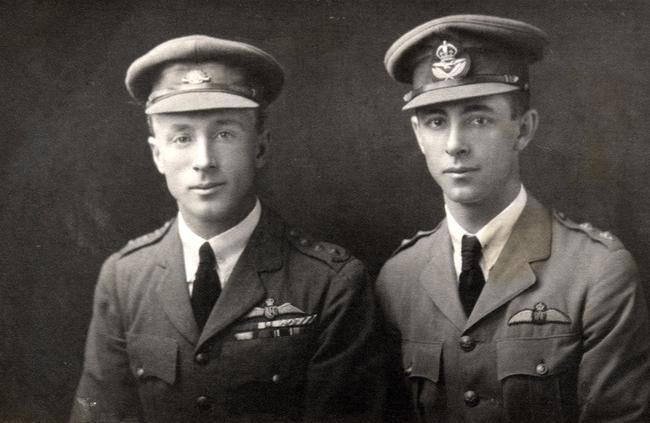
“What these guys did was the moon landing of its day – it was worldwide news and newspapers around the world covered it because it was just such an audacious thing to do.”
The Great Air Race was the brainchild of then Australian Prime Minister Billy Hughes, an aviation enthusiast who conceived of the event as a way of getting Australian pilots home from WWI.
Others, including the Dutch, had shown interest in attempting longer distance flights but it took Hughes’ ambitious idea to test if the dream could be realised.
The race was only open to Australian crews of two or more and flights had to reach Australia within 30 days before the end of 1919, with a £10,000 promised to the winner.
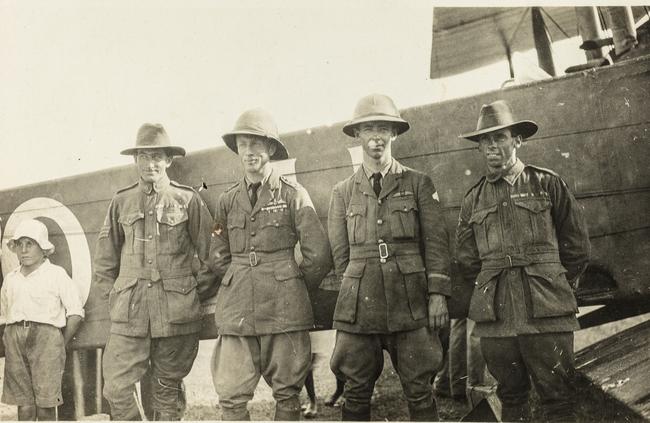
NT-based historian and author Peter Forrest, who has written a book on the Great Air Race and its impact on Darwin, said the event was a huge aviation challenge for its time.
“It would involve the competitors flying more than 12,000 miles to the other side of the world, across the equator, over mountains and deserts and wild places which had never seen an aeroplane before,” he said.
“There had been a couple of crossings of the Atlantic, and that was a big achievement, but this was taking it to a completely new level.”
“It was such a long distance, and the mechanical reliability of aircraft at that time was simply not up to a challenge like that – there was the fear that the planes just wouldn’t be able to handle the distance, because the wear and tear that was involved at that distance was so great.”
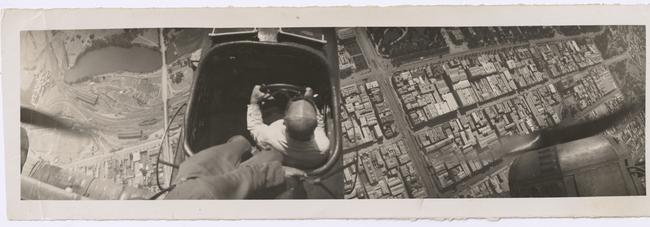
Taking off from London between November and December 1919, it didn’t take long for the five competing crews to run into problems from mechanical issues to severe weather.
Four crews crashed — two fatally — and only the Smith brothers, travelling in what was then the most advanced aircraft of its type, were able to stay the course and make it to Darwin in 27 days.
Darwin Aviation Museum archivist and PhD candidate for the Heritage of the Air Project Fiona Shanahan said the race opened up the future of aviation to the world.
“It was unthought-of at the time, no one thought it was possible,” she said.
“Aviation had been used for a lot of negative things in the First World War … but now there were possibilities of what it could be used for good, in peacetime, everyone was excited.”
The success of the Smiths’ flight sparked a period of rapid growth and enthusiasm for aviation worldwide.

The greatest aviators of the day flocked to attempt the same route, bringing a stream of renowned pilots such as Bert Hinkler and Amy Johnson to Darwin, and led to such innovations as the beginning of airmail and in Australia the formation of Qantas and the Royal Flying Doctor Service.
Darwin Aviation Museum curator Ken Lai said the crews of the Great Air Race were pioneers whose ambitious efforts had set an example others wanted to follow.
“There’s a letter written in 1938 by Stanley Bruce, a former PM of Australia and then High Commissioner to UK, to Keith Smith, and one of the comments he makes is ‘it is amazing to think that what in 1919 was an heroic and hazardous enterprise is now a matter of almost daily routine’, and that really is a testament to what was achieved, “ he said.

On a local level, the race also had a radical impact on the fate of Darwin.
In late 1919 the northern city’s very existence was in jeopardy after its economy and population plummeted with the looming closure of Vesteys Meatworks, then the town’s major employer.
Its role in the Great Air Race turned Darwin’s fortunes around by giving the city a greater purpose, and over the next four decades – until the invention of larger, more fuel efficient aircraft in the 1960s – it would become a hub for the aviation industry and “Australia’s front door” to the world.
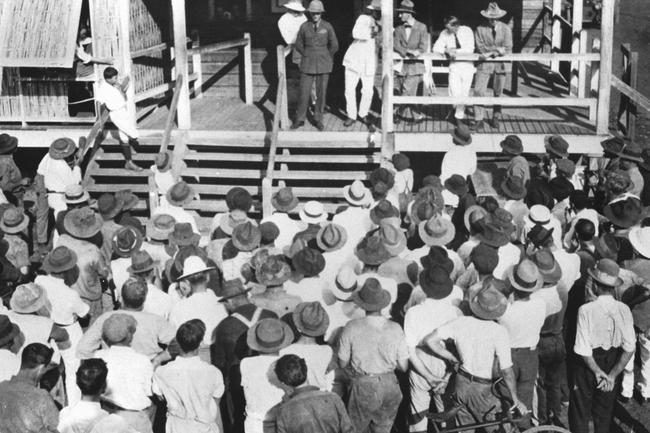
Mr Forrest said aviation changed the landscape of Darwin by boosting the population, creating new industry and employment and significantly raising the city’s profile.
“The aircraft, when it arrived, brought not only those aviators, but it brought a cargo of hope and optimism, that Darwin might have some reason for its continued existence as an aviation hub, and it might have some hope for prosperity in the future based around that,” he said.
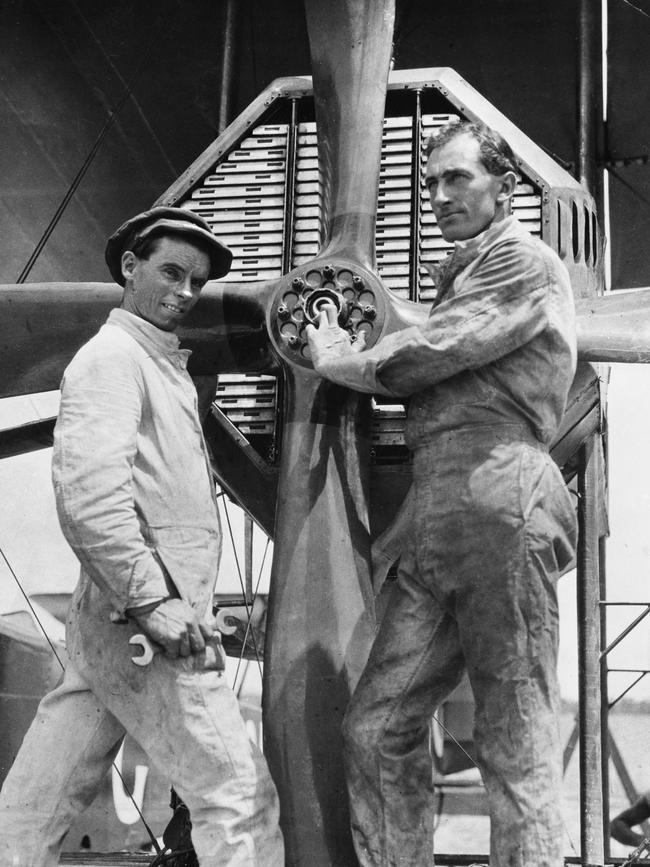
Though today it has somewhat faded in Australian memory, the Great Air Race propelled aviation into the future, gave Darwin a place in the world and above all was a remarkable feat of human endeavour that continues to inspire a century on.
“This is the sort of thing that inspires people to do greater things, to achieve the things that are difficult,” said Mr Lai.


